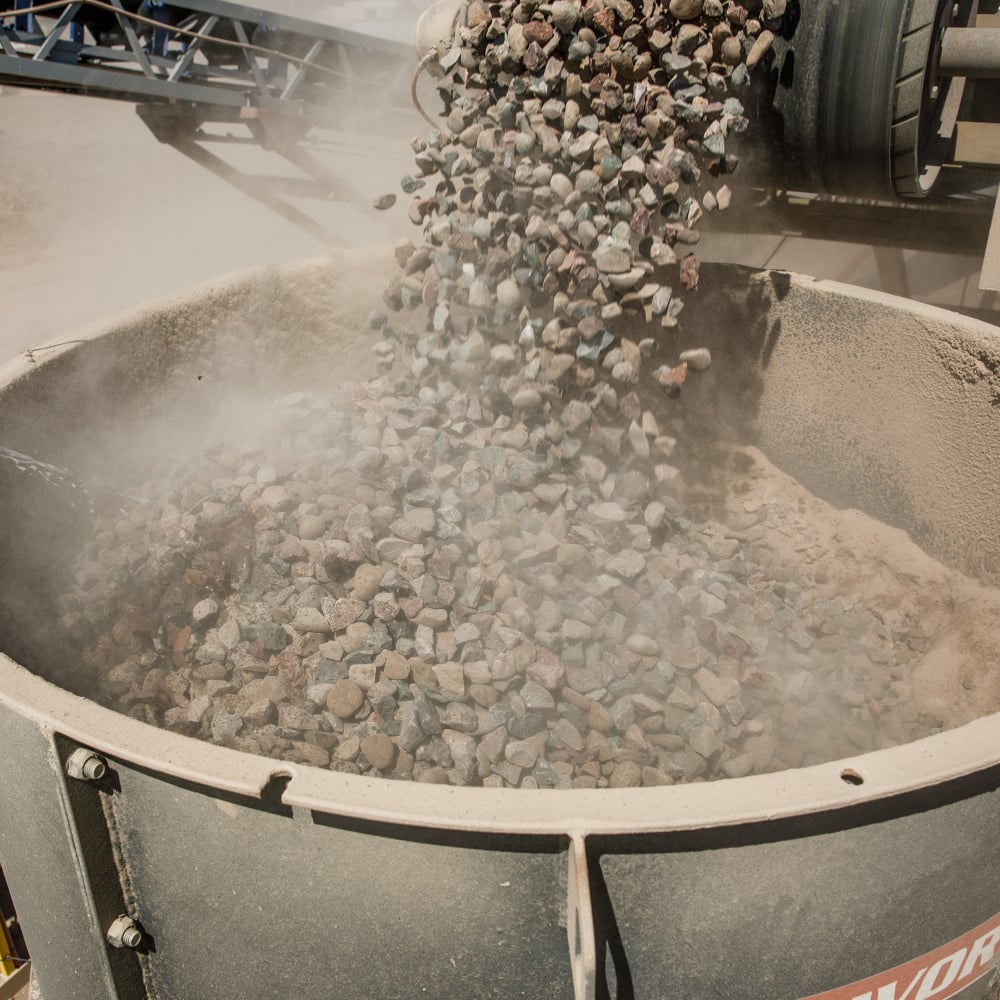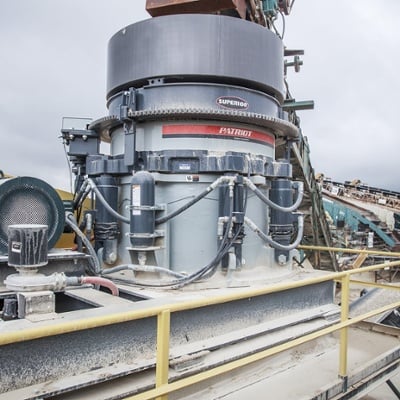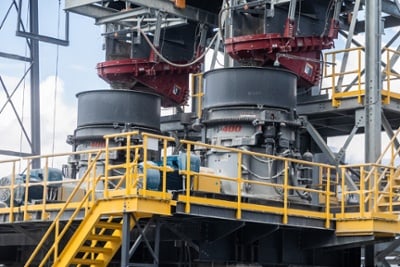Tech Tip: Boost Cone Liner Wear Life
Get Up to 30% More Wear Life
Optimum cone liner utilization delivers greater control over maintenance costs, crusher uptime, product throughput, and overall profitability. “By considering several key strategies, producers can boost cone liner lifespan by up to 30%, depending upon the application,” says Curt Theisen, crushing technical support engineer for Superior Industries. He offers some top tips on boosting cone liner wear life.
Properly Work-Harden The Liner
Manganese steel has long been the ideal choice for cone liners due to its ability to work-harden. Quite simply, as rock impacts or compresses against the outer surface of the new manganese liner, the manganese hardens. Engineering data states that work-hardening can take “green” manganese from 25 Rockwell (250 Brinell) to a hardness of all the way up to 60 Rockwell (660 Brinell).
Theisen says that, according to industry data, “proper work-hardening” can significantly boost overall liner utilization, giving producers up to 30-percent more cone liner life in most applications (other than those that are highly abrasive).
Just after the installation of a new set of manganese cone liners, “proper work-hardening is a gradual process.” To start with, Theisen recommends operating at a 50-percent rate of power (about 65-percent amps) while running with a full cavity for about 6-hours. At this point, the crusher is not operating at maximum power capacity – but it’s still crushing rock – and it’s gradually work-hardening the new liners. After the initial 6 hours, increase operation to 75-percent of power (about 80-percent amps) while running with a full cavity for 2-hours. After that, the liners should be fully work-hardened – and operation can continue near or at full 100-percent rate of power from that point forward.
Keep The Cone Crusher Choke-Fed
Maintaining a continuous feed to the crusher is essential to greater manganese wear life. Choke feeding means keeping the cone head covered with at least 150mm of consistent, homogenous feed material. Most operations use a combination of hoppers, feeders, and surge bins to achieve optimum feeding processes within the cone crushing circuit.
Never run the cone empty or with sudden erratic surges. This causes the head to spin from one direction to the other at a range from 200 to 300 rpm – an inertia and momentum that leads to potential component damage; and accelerated and excessive liner wear. Bottom-line, avoid feeding a crusher on and off all day long. Instead, supply an ongoing, even material load to the crusher throughout the work shift.

More Is Better
Proper work-hardening and consistent choke feeding are two “best practices” that lead to more crushing efficiency, more manganese wear life, more product output, and a consistent yield of a more cubicle product.

OptimizeU - Strategic Learning
Pursue greater production with comprehensive online courses in crushing, screening, conveying, and washing. Check out the premiere training resource in the construction aggregates industry.
Related Content

Maximizing Cone Crusher Performance: Achieve Peak Performance in Quarrying & Mining
Maximize cone crusher performance in quarrying and mining with proactive maintenance, proper circuit design, and easy-to-use automation.

Air Breather Maintenance: Don't Overlook Crucial Crusher Protection
Proper air breather maintenance is crucial for protecting your crusher from contamination. Learn why regular inspection and replacement are key to optimal performance.

Timing Cone Liner Changeouts: Your Timing is Everything!
Optimize cone liner changeouts for maximum crushing efficiency and liner performance. Learn how to determine the right timing and achieve at least 50% liner utilization.
